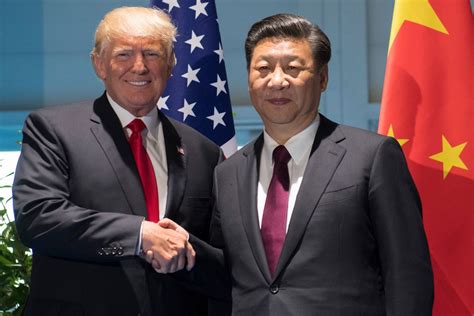—
Trump’s Tough Talk on Tariffs
In a bold move that sent shockwaves through global markets, US President Donald Trump recently announced a series of tariffs targeting not only China but also other key Asian nations. Describing it as a “full-frontal assault,” the new measures have raised concerns about their potential impact on international trade dynamics.
During his address, Trump emphasized the need to address what he perceived as unfair trade practices by China. By imposing steep tariffs and taking aim at countries that serve as alternatives for Chinese supply chains, the US administration is seeking to reshape economic relationships in the region.
China’s Response and Escalating Tensions
Unsurprisingly, China swiftly denounced the move, labelling it as unilateral bullying and vowing to retaliate with countermeasures. The escalating tensions between the two economic powerhouses have put global trade at risk and stirred uncertainty among investors worldwide.
Experts warn that these new tariffs could set off a chain reaction, impacting not only Chinese industries but also neighboring countries like Vietnam and Laos. With intricate supply chains woven across borders, any disruption in one part of Asia can have far-reaching consequences throughout the region.
The Domino Effect on Supply Chains
The imposition of heavy tariffs on Vietnam, Laos, and Cambodia has further complicated China’s efforts to navigate around previous levies imposed by the US government. This strategic move by Trump represents a broader tactic aimed at containing Beijing’s influence and reshaping trade patterns in Asia.
As businesses grapple with higher costs and potential disruptions to their operations, there are concerns about job losses and reduced competitiveness in both Chinese and American markets. The ripple effects of these tariffs are being felt across industries ranging from technology to manufacturing.
Strategic Considerations for China
Amid mounting pressure from Washington, Beijing faces tough choices ahead in formulating its response to the latest round of tariffs. With limited time before these measures come into effect, Chinese authorities must weigh their options carefully to mitigate potential damage to their economy.
Analysts suggest that building stronger alliances with other Asian nations could offer China some leverage in navigating this challenging landscape. Collaborative efforts towards free trade agreements and regional cooperation may present viable solutions amidst escalating trade tensions.
Towards Diplomatic Negotiations
While short-term uncertainties loom large, long-term prospects hinge on diplomatic negotiations between the US and China. Both sides are expected to engage in discussions aimed at reaching comprehensive agreements that address broader economic issues beyond just tariffs.
As stakeholders brace for further developments in this unfolding saga of trade disputes, there is hope for constructive dialogue that could pave the way for more stable economic relations in the future. The global community watches closely as these two economic giants navigate through turbulent waters towards a potentially transformative resolution.








Leave feedback about this